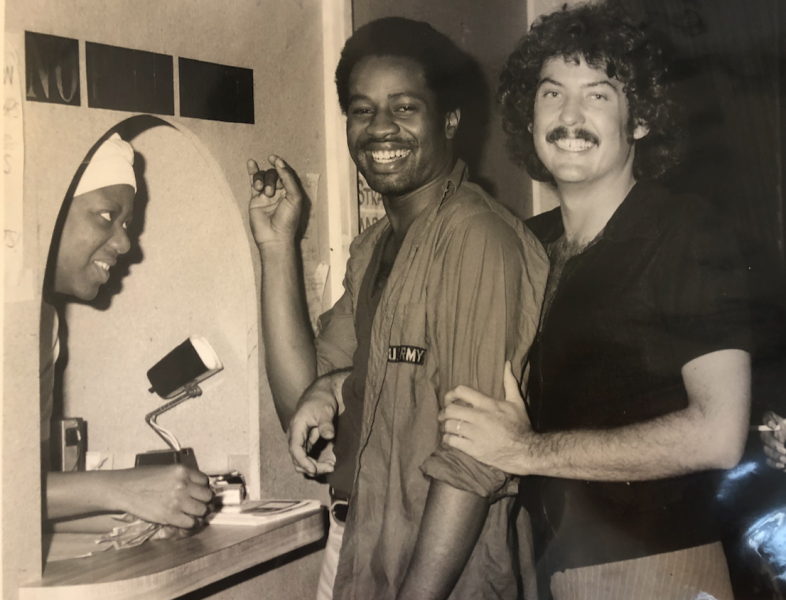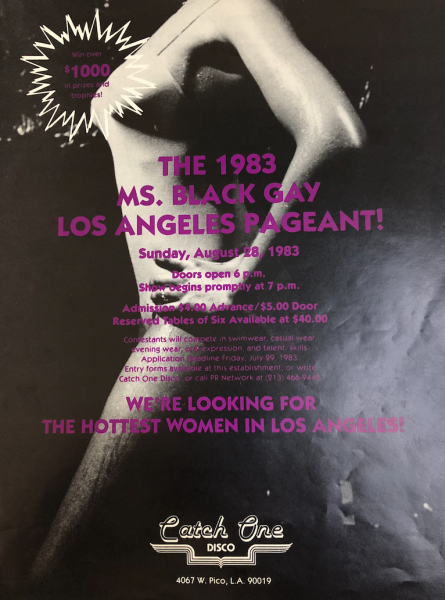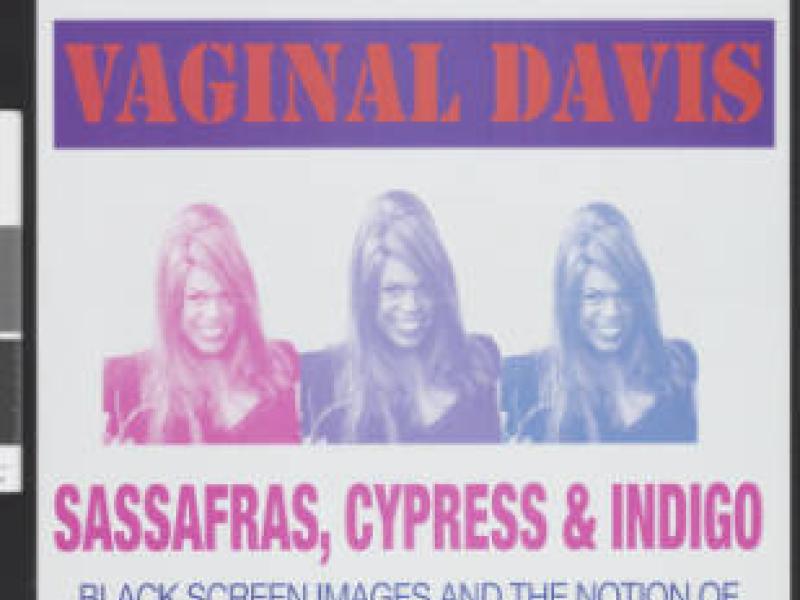Jewel Thais Williams' Catch One became a safe haven for black members of the LGBT community. Catch One's inception addressed both the lack of social gatherings for black people as a whole and the minimal available spaces for those who identified as LGBT. With Catch One, she wanted it to be known that “it didn’t matter who you were, who you did or who you didn’t do” (“A Pioneer is Given Her Due at Last” Los Angeles Times. 10 June 2016). Diversity was one of the main factors that contributed to the success of the club — black LGBTs not only had a safe space to explore and let loose, but they were also able to escape the constrictions of their social class.
Another factor that set Catch One apart from other gay discos of the time was its commitment to both men and women. Two big events held included both Mr. Black Gay California and Ms. Black Gay California. While pageants were not an uncommon feature at gay discos, pageants of both men and women at one place were. Similarly, Catch One held both exclusive boys’ nights and girls’ nights. Boys’ nights were common at other prominent gay discos at the time, but not girls’ nights. One flyer advertised “An evening of lesbian/gay culture with Pat Parker, black lesbian feminist poet to benefit the citizens’ police review board campaign.” In addition to its inclusion of black lesbian thought, the flyer was also written in both English and Spanish (ONE Archives, Subject Files). The subject matter also indicated the catering of the institution to the concerns of people of color, as the police have always been a threat to the lives of people of color in particular. In addition, Catch One’s annual summer dance was sponsored by Choices, “an organization that was formed to meet the social needs of women of color”. Choices served to encourage WOC lesbians to network, develop support systems, and provide a positive atmosphere for identity (ONE Archives, Subject Files). These events show that Catch One was something of an exception to the proliferation of male-centric gay discos of the disco era.
Gay art was also an important piece of the Catch One brand. In addition to the poetry, community art exhibitions were held at Catch, one of which was sponsored by the Visual Arts Counsel of the Committee of Black Gay Men (ONE Archives, Subject Files). This event was free to the public, demonstrating the club’s interest in patronage of the arts, not just its business model. Another one of the club’s summer balls advertised a drag competition with categories “divas, body beautiful, house realness, and vogue.” The proceeds of the competition would benefit The House of Rue, which was a shelter for women and children living with HIV and AIDS (ONE Archives, Subject Files).
The Catch One magazine was another unique part of the Catch One experience. In these magazines, lists of the most-danced-to songs could be found as well as photographs from recent events, classifieds, event schedules, dating services and profiles of individual people (ONE Archives, Subject Files). The publication represented a unique level of connection between the club and its patrons. Individual people were able to engage with one another via the magazine, anonymously or not, fostering the sense of community and inclusion that was central to the existence of Catch One.







































